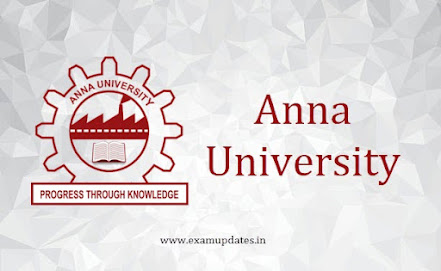PHYSICS FOR ELECTRONICS ENGINEERING
COURSE OBJECTIVES:
● To make the students to understand the basics of crystallography and its importance in studying materials properties.
● To understand the electrical properties of materials including free electron theory, applications of quantum mechanics and magnetic materials.
● To instil knowledge on physics of semiconductors, determination of charge carriers and device applications
● To establish a sound grasp of knowledge on different optical properties of materials, optical displays and applications
● To inculcate an idea of significance of nano structures, quantum confinement and ensuing nano device applications.
UNIT I CRYSTALLOGRAPHY 9
Crystal structures: Crystal lattice – basis - unit cell and lattice parameters – crystal systems and Bravais lattices – Structure and packing fractions of SC, BCC, FCC, diamond cubic, NaCL, ZnS structures – crystal planes, directions and Miller indices – distance between successive planes – linear and planar densities – crystalline and noncrystalline materials –Example use of Miller indices: wafer surface orientation – wafer flats and notches – pattern alignment - imperfections in crystals.
UNIT II ELECTRICAL AND MAGNETIC PROPERTIES OF MATERIALS 9
Classical free electron theory - Expression for electrical conductivity – Thermal conductivity, expression - Quantum free electron theory :Tunneling – degenerate states – Fermi- Dirac statistics – Density of energy states – Electron in periodic potential – Energy bands in solids – tight binding approximation - Electron effective mass – concept of hole. Magnetic materials: Dia, para and ferromagnetic effects – paramagnetism in the conduction electrons in metals – exchange interaction and ferromagnetism – quantum interference devices – GMR devices.
UNIT III SEMICONDUCTORS AND TRANSPORT PHYSICS 9
Intrinsic Semiconductors – Energy band diagram – direct and indirect band gap semiconductors – Carrier concentration in intrinsic semiconductors – extrinsic semiconductors - Carrier concentration in N-type & P-type semiconductors – Variation of carrier concentration with temperature – Carrier transport in Semiconductors: Drift, mobility and diffusion – Hall effect and devices – Ohmic contacts – Schottky diode.
UNIT IV OPTICAL PROPERTIES OF MATERIALS 9
Classification of optical materials – Optical processes in semiconductors: optical absorption and emission, charge injection and recombination, optical absorption, loss and gain. Optical processes in quantum wells – Optoelectronic devices: light detectors and solar cells – light emitting diode – laser diode - optical processes in organic semiconductor devices –excitonic state – Electro-optics and nonlinear optics: Modulators and switching devices – plasmonics.
UNIT V NANO DEVICES 9
Density of states for solids - Significance between Fermi energy and volume of the material – Quantum confinement – Quantum structures – Density of states for quantum wells, wires and dots – Band gap of nanomaterials –Tunneling – Single electron phenomena – Single electron Transistor. Conductivity of metallic nanowires – Ballistic transport – Quantum resistance and conductance – Carbon nanotubes: Properties and applications - Spintronic devices and applications – Optics in quantum structures – quantum well laser.
COURSE OUTCOMES:
At the end of the course, the students should be able to
● know basics of crystallography and its importance for varied materials properties
● gain knowledge on the electrical and magnetic properties of materials and their applications
● understand clearly of semiconductor physics and functioning of semiconductor devices
● understand the optical properties of materials and working principles of various optical devices
● appreciate the importance of nanotechnology and nanodevices.
TEXT BOOKS:
1. S.O. Kasap. Principles of Electronic Materials and Devices, McGraw Hill Education (Indian Edition), 2020.
2. R.F.Pierret. Semiconductor Device Fundamentals. Pearson (Indian Edition), 2006.
3. G.W.Hanson. Fundamentals of Nanoelectronics. Pearson Education (Indian Edition), 2009.
REFERENCES:
1. Laszlo Solymar, Walsh, Donald, Syms and Richard R.A., Electrical Properties of Materials, Oxford Univ. Press (Indian Edition) 2015.
2. Jasprit Singh, Semiconductor Optoelectronics: Physics and Technology, McGraw-Hill Education (Indian Edition), 2019.
3. Charles Kittel, Introduction to Solid State Physics, Wiley India Edition, 2019.
4. Mark Fox, Optical Properties of Solids, Oxford Univ.Press, 2001.
5. N.Gershenfeld. The Physics of Information Technology. Cambridge University Press, 2011
Click Here to Download Question Paper- Apr/May 2017
Click Here to Download Question Paper- Apr/May 2018
Click Here to Download Question Paper- Nov/Dec 2017
Click Here to Download Anna University Syllabus
Anna University Syllabus Regulation 21 (Sem-2)CIRCUIT ANALYSIS
Anna University Syllabus Regulation 21 (Sem-2)BASIC ELECTRICAL AND INSTRUMENTATION ENGINEERING
Anna University Syllabus Regulation 21 (ECE Sem-2) Physics
Anna University Syllabus Regulation 21 (Sem-2) Mathematics-2
Anna University Syllabus Regulation 21 (Sem-2) English
Are you a fresher and looking for Job? To know more about the Job Openings: Click Here

Comments
Post a Comment